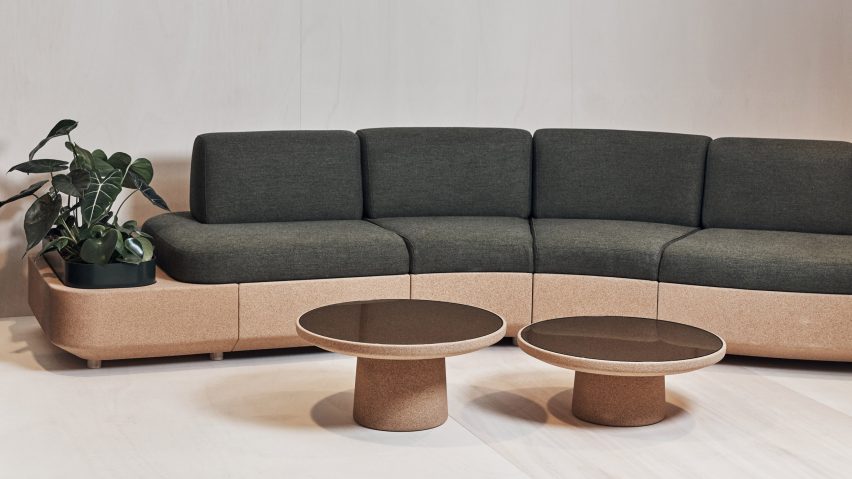
Isomi "challenges norms" of sofa design with cork and latex Tejo
Designer Paul Crofts and furniture brand Isomi aimed to make sofas less wasteful with Tejo, a recyclable system created from natural cork and latex that is launching at Clerkenwell Design Week.
The Tejo system uses cork for the base and backrest of the sofa in place of a typical plywood or metal frame, and latex wrapped in wool wadding for the filling instead of polyurethane foam – a hard-to-recycle type of plastic containing toxic chemicals.
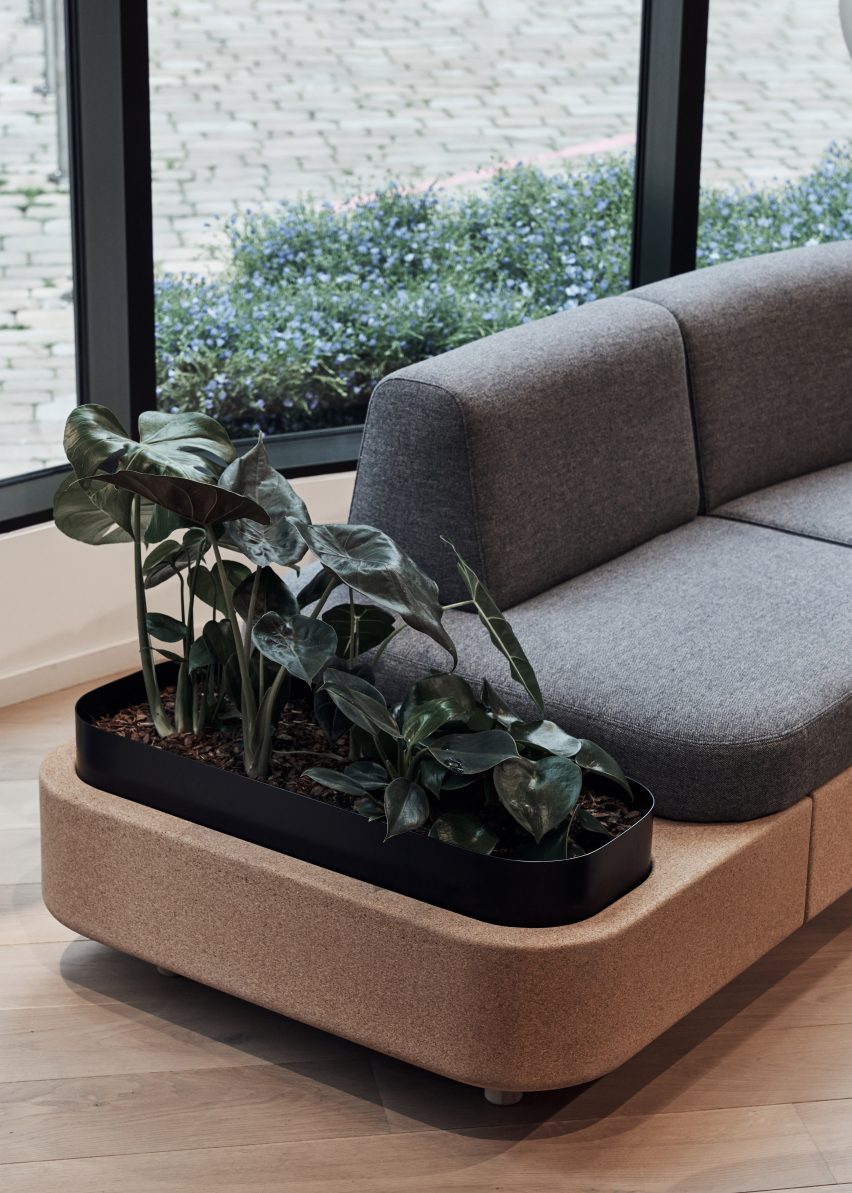
Finished with wool, flax or hemp upholstery, the sofa is more than 99 per cent composed of natural, renewable materials, according to Crofts. The only exception is the thin baseboard on the seat pads, which is made of glue-containing plywood.
The designer also addressed other elements that make conventional sofas much more likely to end up in landfill than at a recycling facility.
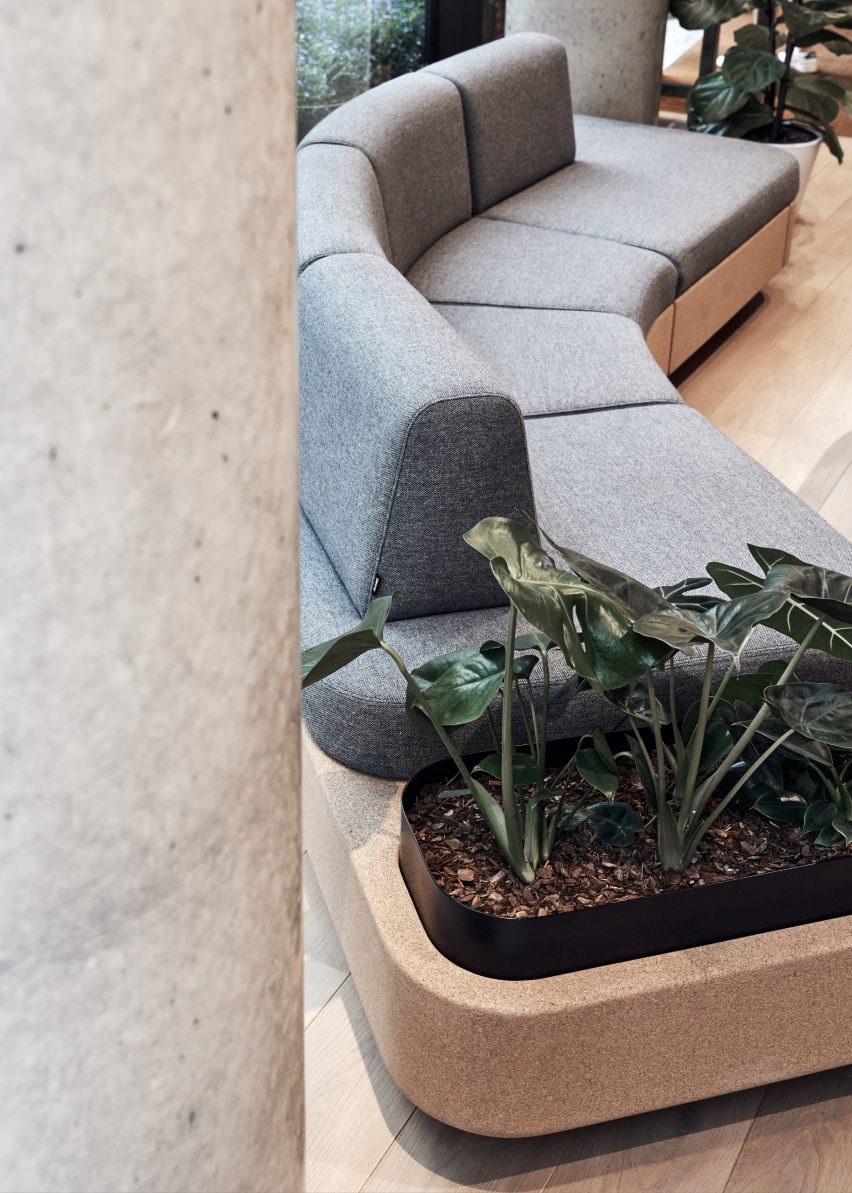
Chief among them is their complex structure, often held together with glue or staples that make it almost impossible to separate one material from another.
Tejo, by contrast, has a simple construction that is easy to disassemble, and all of its fixings are internally visible to aid that process so every element of the couch can ultimately be recycled.
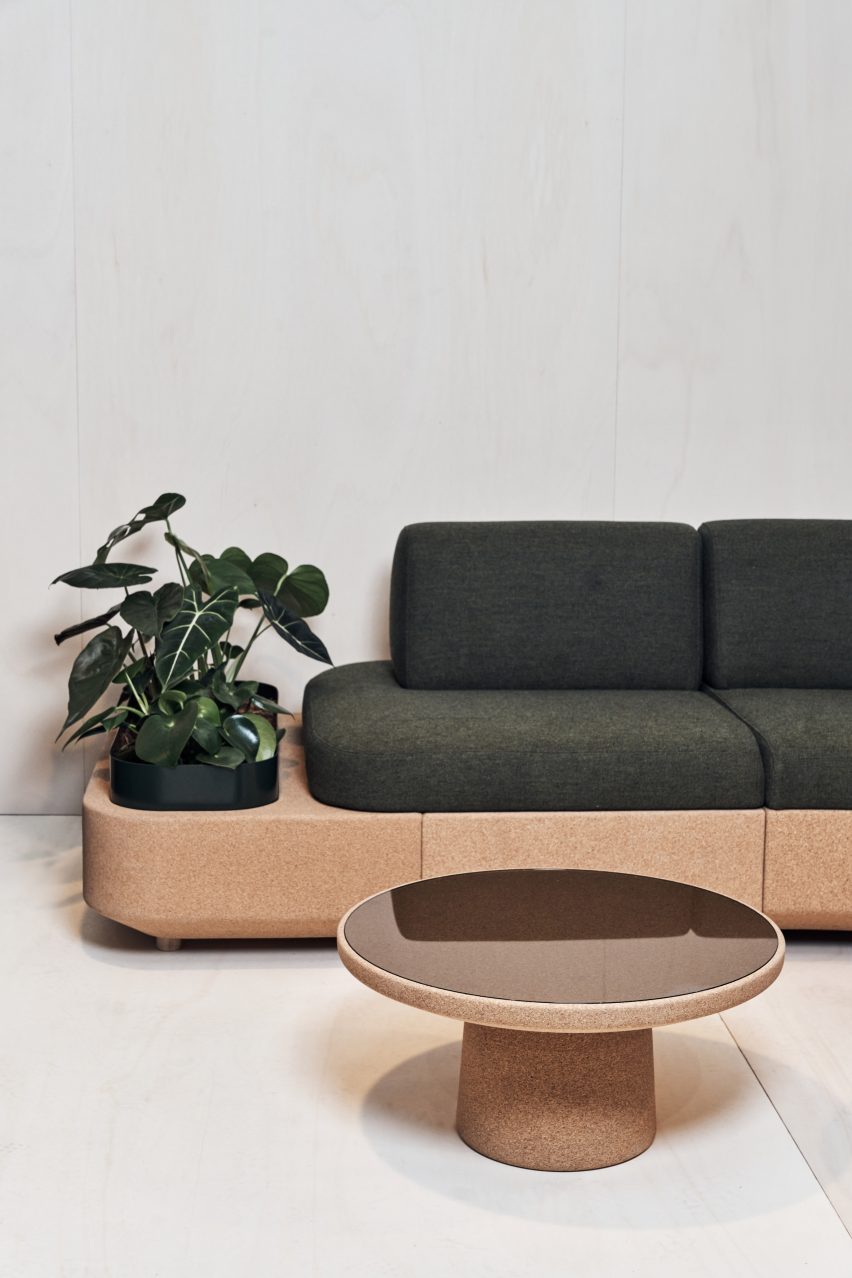
The project posed a significant design problem for the brand, which says that of all the furniture categories, the sofa is "probably the most challenging in terms of sustainability".
Over the last year, this has led a number of companies to start rethinking the product, with Takt unveiling a sofa "designed for repair" while Space10 used AI to create a concept for a lightweight, recyclable Couch in an Envelope.
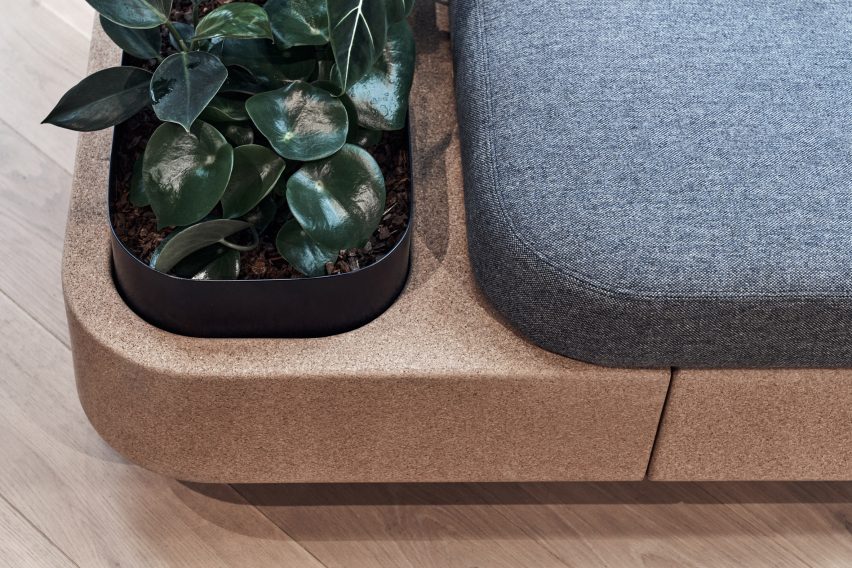
Crofts, who co-founded Isomi 12 years ago, first began to conceptualise Tejo after spotting cork blocks stacked up in the corner of a factory in Portugal, and said he aimed to "challenge the norms" of traditional sofa construction with the design.
Portugal is the world's biggest producer of cork, which is the bark of cork oak trees and can be harvested approximately every nine years without harming the plants.
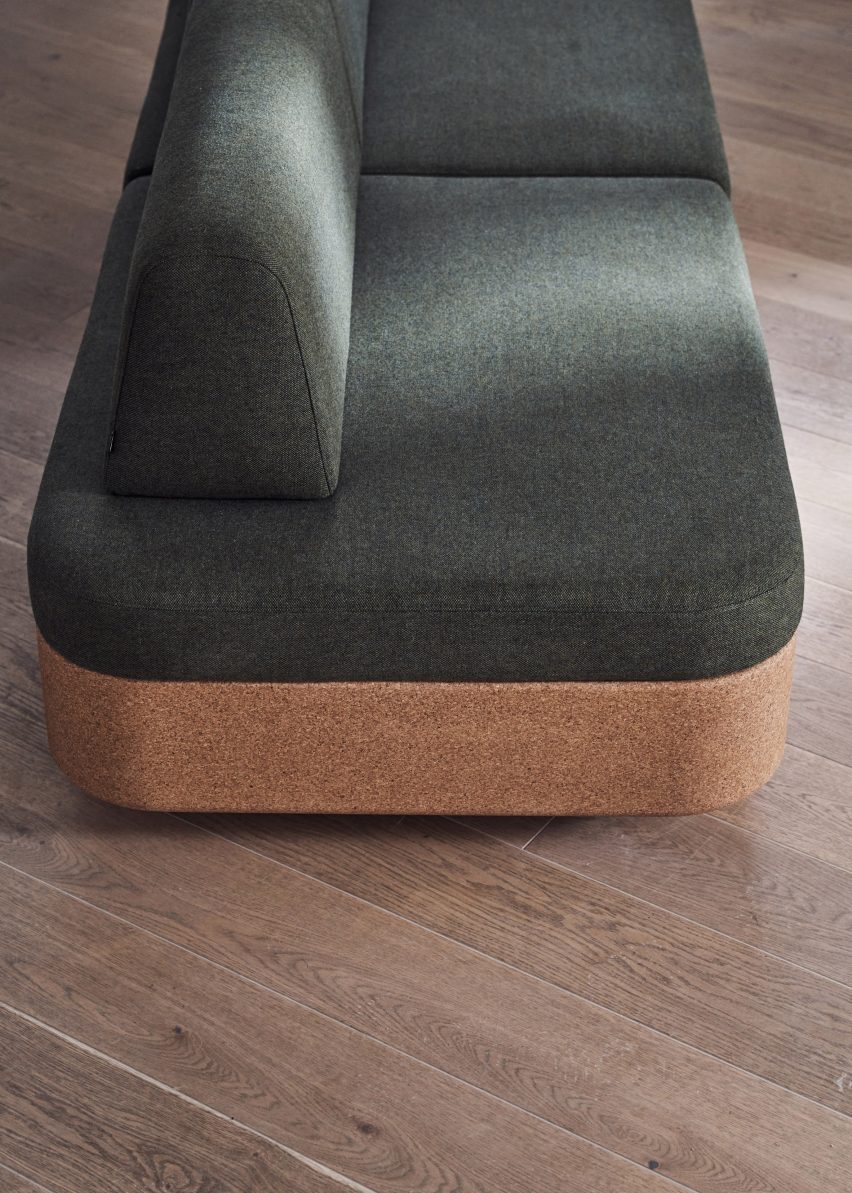
The corks that stop up wine bottles are stamped directly out of this bark, and the leftover material is then chipped and compacted to make cork blocks that can be used as a raw material by manufacturers.
However, using the material for the sofa presented some obstacles. First, it is relatively expensive, so Crofts worked to maximise how much of each block he could use and minimise waste.
The blocks come in a standard size that ultimately determined the shape of the sofa. Crofts cut them either by length or width to obtain Tejo's modules, which come in 600-millimetre or 900-millimetre variants.
It was also a challenge to understand the properties of the new material and how they would affect the design. For instance, the middle section of the blocks retained more moisture than the outer edges, affecting how they should be handled.
"The design was constantly evolving throughout the process," Crofts told Dezeen.
"We were continually trying to find the balance between structural integrity and minimal use of material, softening edges to protect corners, changing depths to improve material yield or designing in tolerance for movement during the production process."
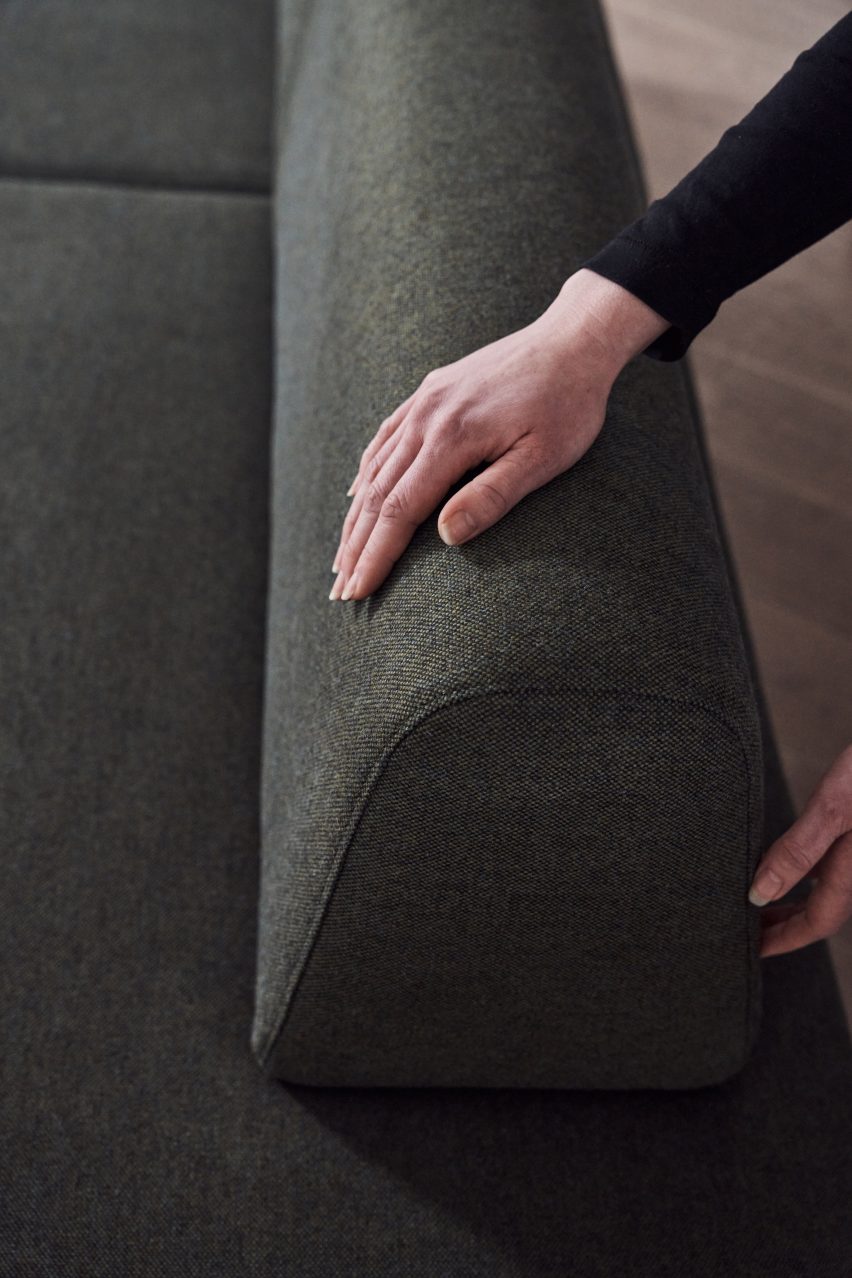
Working with natural latex also had its challenges. Unlike polyurethane foam, latex comes in slab form only and can't be moulded or CNC shaped, according to Crofts.
This gives rise to simpler forms and less sculpted surfaces – an aesthetic that might risk turning away consumers who associate the overstuffed look of polyurethane with comfort.
"I had to avoid the temptation to revert back to PU foam just to achieve a particular curve or form," said Crofts. "We need to move away from the excess often found within PU foam cushions."
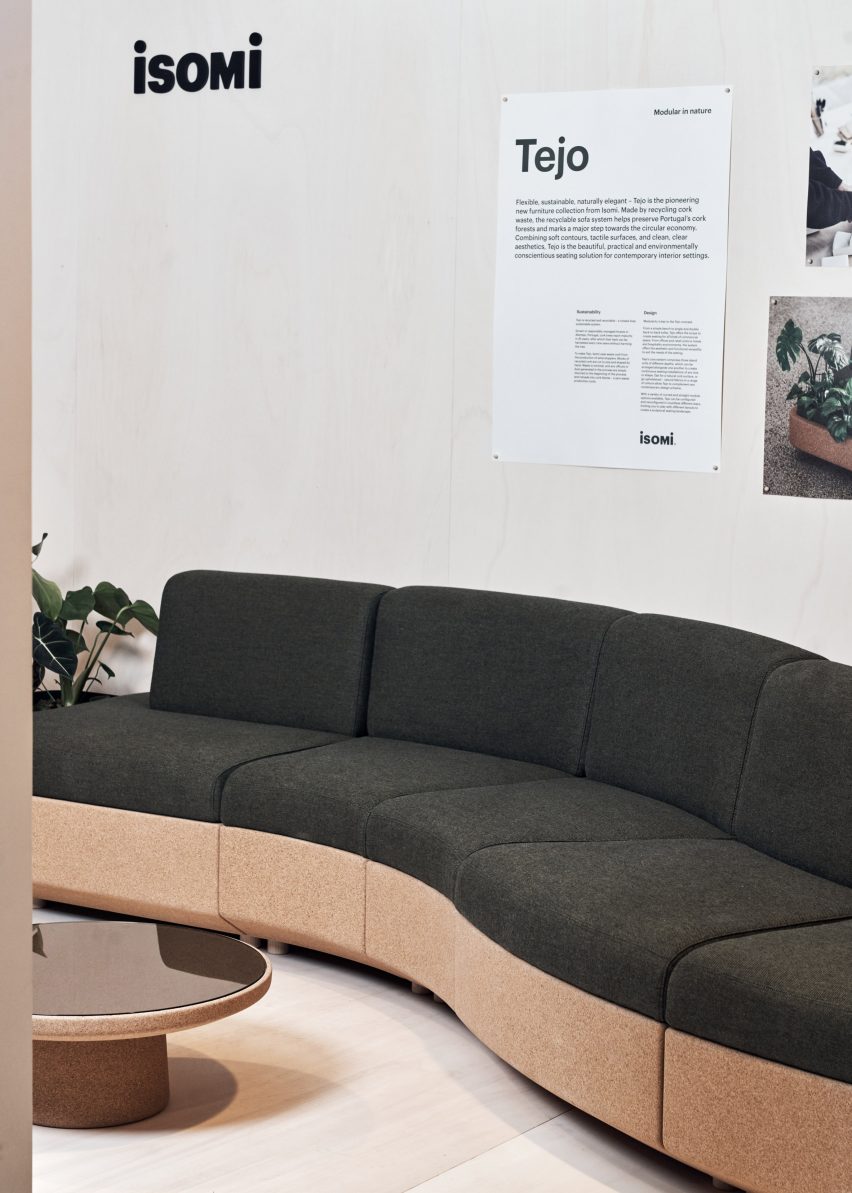
As with cork, latex is also expensive, requiring Crofts to think creatively about how to use the material.
"The profiling of the back for example is largely created by the internal curved forms of the cork substructure," said Crofts. "This then doesn't rely on a moulded PU form to create the shape."
"The natural latex simply drapes over the cork back to create the form."
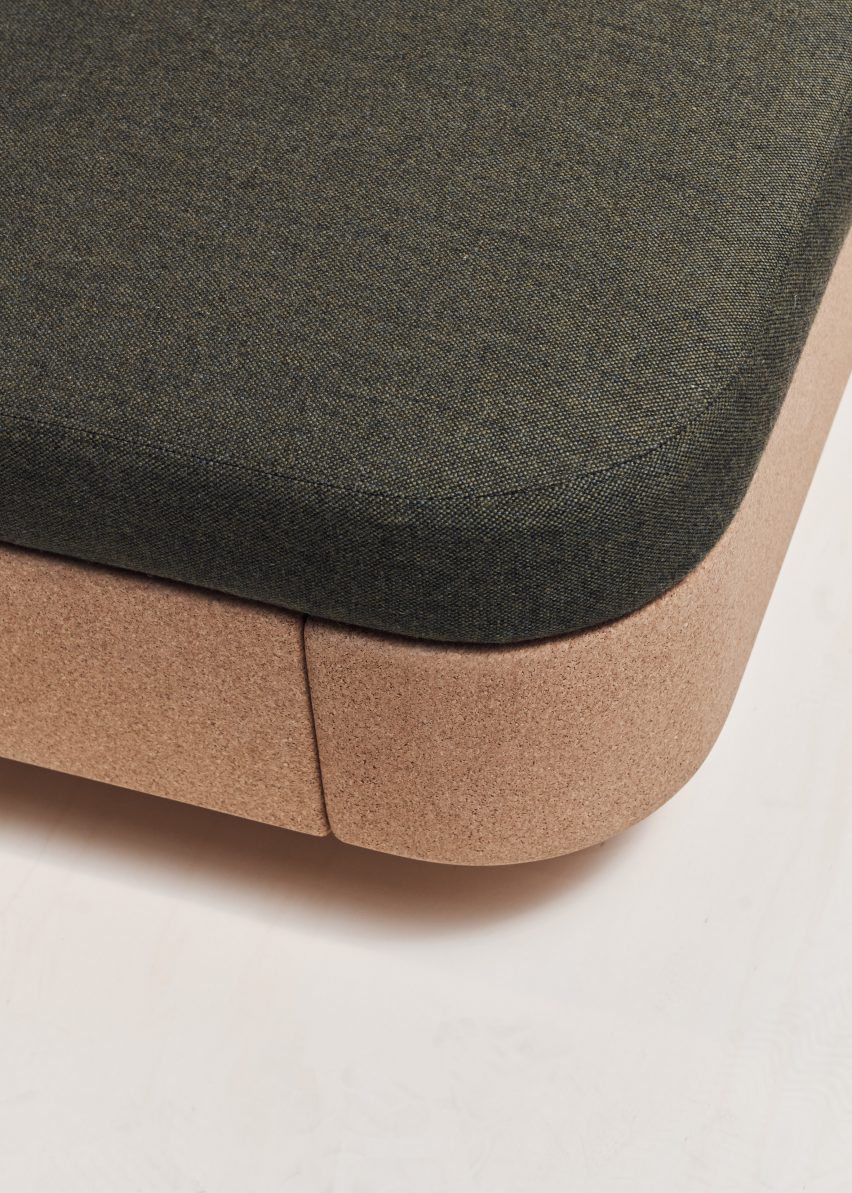
Isomi is targetting commercial premises, workspaces, retail and hospitality with the Tejo seating, which is made up of modules that can be assembled in almost endless configurations.
There are three basic units – a bench, single sofa and double back-to-back sofa – which come in curved or straight variants alongside a range of accessories such as tables and planters that further customise the finished product.
The cork bases can be either upholstered or left exposed to showcase their material composition.
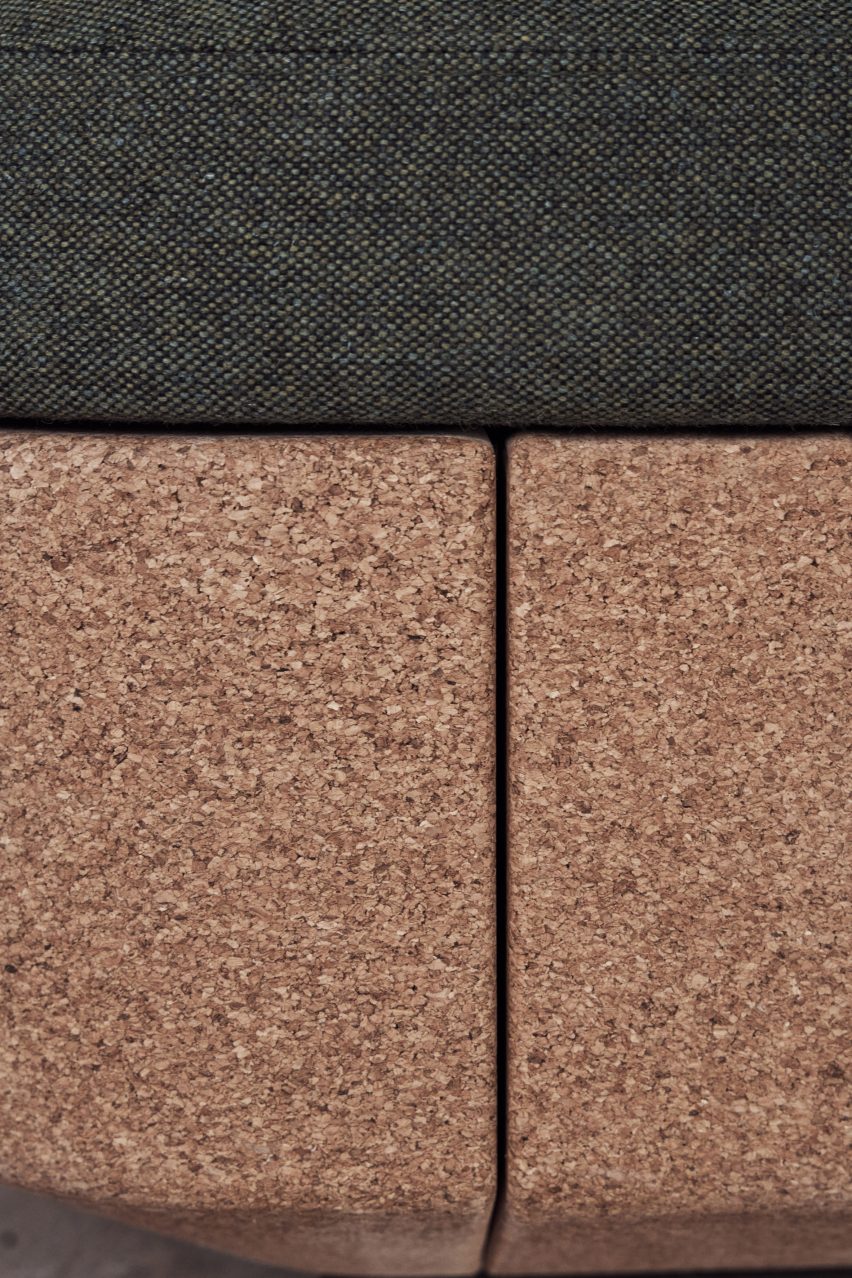
Presented as part of this year's Clerkenwell Design Festival in London, the sofa represents a new furniture typology for Isomi.
However, modularity is a long-standing focus for the brand, with previous products including the Assembled storage system made up of stackable timber units.
Clerkenwell Design Week takes place from 21 to 23 May 2024 at various locations across London. See Dezeen Events Guide for an up-to-date list of architecture and design events taking place around the world.